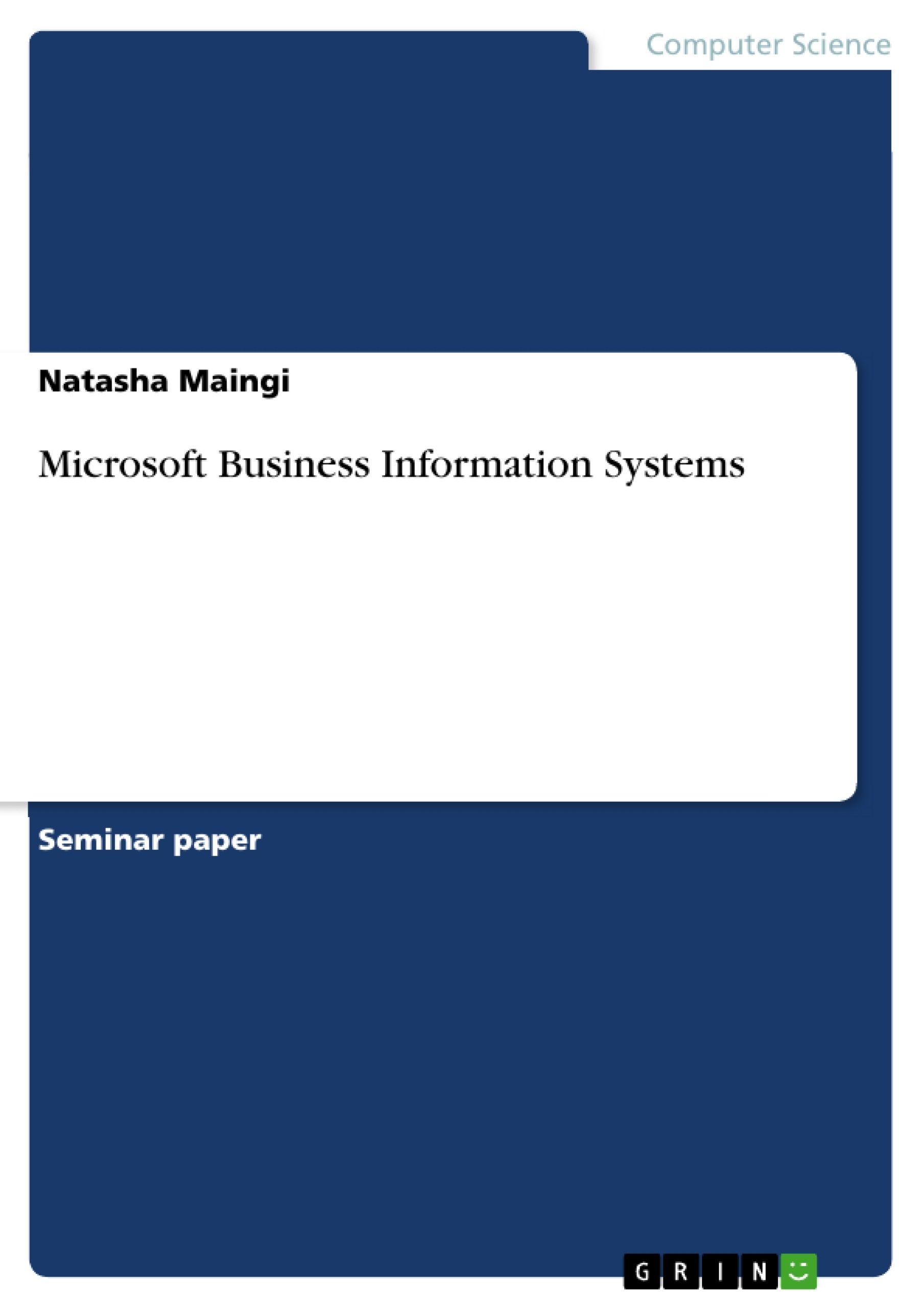Information is necessary for many businesses whether small, medium, or large, and the necessity of the information depends on a variety of uses. For example, in the case of proper planning in the business, senior managers will require information to facilitate this planning. However, middle-level management relies on detailed systems of information in order to properly control and monitor various activities in the business. At the same time, various employees who have operational roles also tend to rely on information systems in order to efficiently carry out their duties in the business. Due to all these necessities, many businesses tend to develop information systems that operate at the same time. The Microsoft Company applies Management Information Systems (MIS) in dealing with internal affairs of the company. An Office Automation System (OAS) improves the productivity of employees who need to process data and information (Bill 2006). The Microsoft Company deals with several software systems and the use of OAS becomes handy since it enhances employees’ productivity. Employees have the ability to work from their own homes, as well as other areas at their convenience. Apart from these two systems of information, the other systems of information applicable by the Microsoft Company is the use of Decision Support Systems commonly known as DSS. A decision support system enables the management to make decisions in situations surrounded by uncertainty (Bill 2006). A lot of uncertainty occasionally arises from these big companies such as Microsoft and in such times, the use of DSS becomes handy. This method consists of techniques and tools capable of collecting relevant information and providing analysis of all the relevant information gathered. In the process of analysis provisions, the method also provides alternatives used in case of absence of relevant information. Apart from the provisions of alternatives, this method also involves the use of complex spreadsheets and various databases used to develop several “what-if” models.
Table of Contents
- Evaluation of Business Information System at Microsoft
- Critical Analysis of MIS, DSS, and OAS Information Systems
- Critical Analysis of DSS
- Critical Analysis of Office Automation Systems
- How Microsoft can use these Systems for Competitive / Strategic Value
- Porter's 5 Forces Model
- Legal and Ethical Issues
- Supply Chain Management Systems
- Customer Relationship Management System
- E-business Component of Microsoft
- Knowledge Management
- Global Information Management
Objectives and Key Themes
This text aims to analyze the implementation and strategic value of various information systems within Microsoft, examining how they contribute to the company's competitive advantage. The analysis focuses on Management Information Systems (MIS), Decision Support Systems (DSS), and Office Automation Systems (OAS), highlighting their unique characteristics and practical applications within the context of Microsoft's business operations. Key themes explored in the text include:- The role of information systems in enhancing business efficiency and productivity
- The strategic use of information systems for competitive advantage
- The application of Porter's Five Forces model in analyzing Microsoft's competitive landscape
- The impact of information systems on Microsoft's supply chain and customer relationship management
- The importance of knowledge management and global information management within Microsoft
Chapter Summaries
- Evaluation of Business Information System at Microsoft: This chapter introduces the concept of information systems and their importance for businesses of all sizes. It highlights the role of information systems in planning, control, monitoring, and operational efficiency, emphasizing the specific applications of MIS, OAS, and DSS within Microsoft.
- Critical Analysis of MIS, DSS, and OAS Information Systems: This chapter delves into the specific characteristics and applications of each information system. It explores how Microsoft uses MIS to develop custom information systems, analyze data, and generate reports. The chapter also discusses the use of DSS for service development, tutorials, and communication within the company. Lastly, it examines the role of OAS in streamlining workflows, building custom applications, and validating software.
- How Microsoft can use these Systems for Competitive / Strategic Value: This chapter discusses the potential benefits of utilizing these information systems to develop new software and gain a competitive edge over rival companies like Android and Mac OS.
- Porter's 5 Forces Model: This chapter analyzes Microsoft's competitive position using Porter's Five Forces model. It examines the power of suppliers, buyers, competition, substitutes, and the threat of new entrants, exploring how Microsoft leverages its position in the market to maintain its competitive advantage.
Keywords
This text focuses on the implementation and strategic value of information systems within Microsoft, covering key concepts such as MIS, DSS, OAS, Porter's Five Forces model, supply chain management, customer relationship management, knowledge management, and global information management. It examines how these systems contribute to Microsoft's competitive advantage and its ability to adapt and thrive in a constantly evolving technological landscape.- Quote paper
- Natasha Maingi (Author), 2011, Microsoft Business Information Systems, Munich, GRIN Verlag, https://www.grin.com/document/269108




